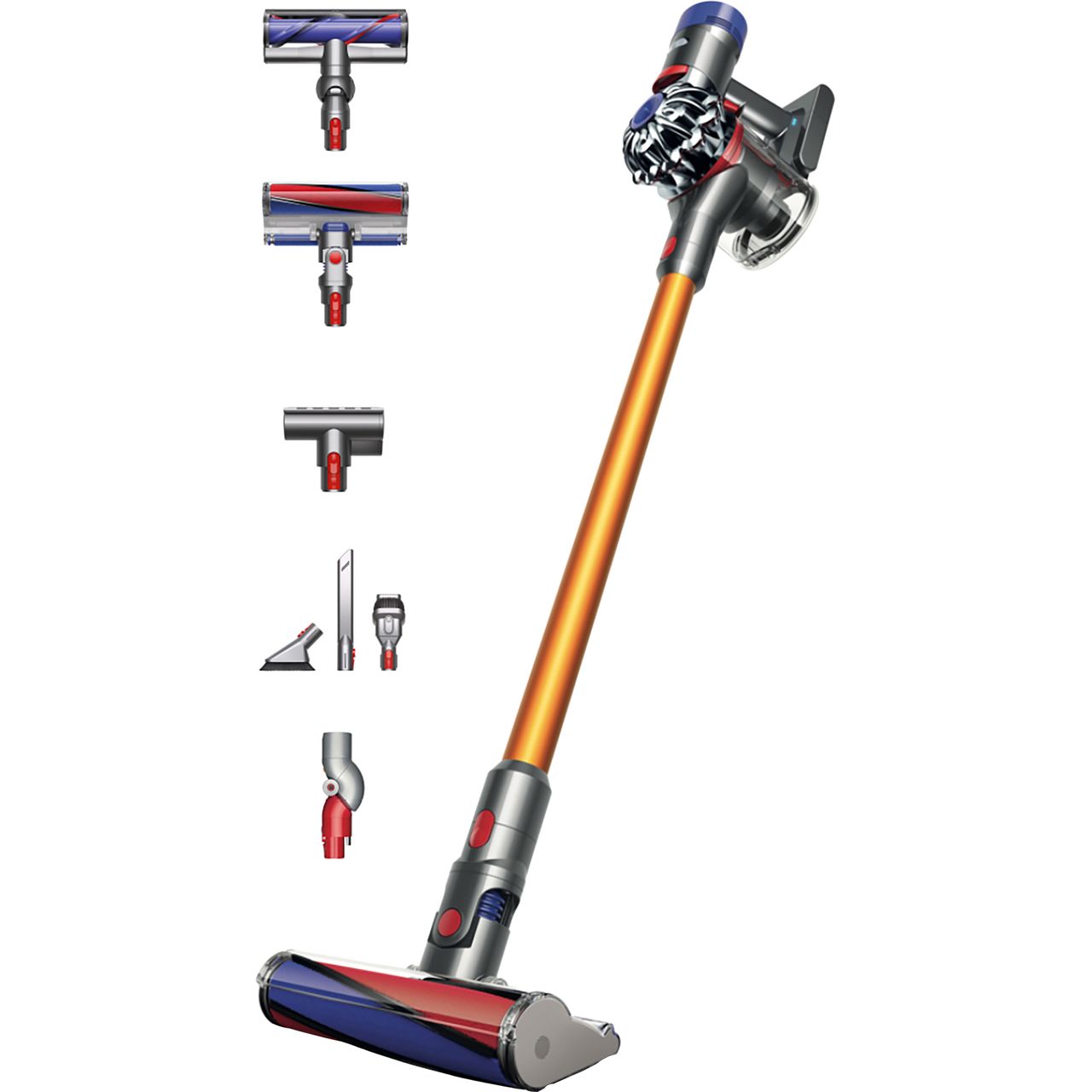Shark Rotator Professional Lift-Away Upright Vacuum (NV501)
Detach the pod for above-floor cleaning. Anti-Allergen Complete Seal Technology + HEPA filter. Swivel Steering for control and maneuverability. XL Capacity; Full-size performance. LED headlights illuminate hidden debris. Specialized tools for versatile cleaning.
The Shark Rotator Professional Lift-Away Upright Vacuum with a detachable pod. With just the push of a button, detach the pod to clean above the floor. Features Anti-Allergen Complete Seal Technology and a HEPA filter to trap dust and allergens.
PRODUCT FEATURES
- Lift-Away: Detach the pod for above-floor cleaning
- Anti-Allergen Complete Seal Technology + HEPA filter
- Swivel Steering for control and maneuverability
- XL Capacity; Full-size performance
- LED headlights illuminate hidden debris
- Specialized tools for versatile cleaning
WHAT’S INCLUDED
- 12″ crevice tool
- Dusting brush
- Wide upholstery tool
PRODUCT DETAILS
- 45.7″H x 13.4″W x 12.2″D
- 0.88 dry-qt capacity
- 1200 watts
- 11.5-in. cleaning path width
- 30-ft. cord length
- 8.4-ft. hose length
- 15.5 lbs.
- Manufacturer’s 5-year limited warranty
- Model no. NV501, NV500
Additional information
| Dimensions | 45.7"H x 13.4"W x 12.2"D |
|---|





by Kaleigh
I bought this Vacuum to upgrade from my cheap off brand vacuum. I used my old vacuum and then went over the same area with my new Shark Rotator. Holy smokes the amount of dirt and dog hair it sucked out of my rugs was amazing. The brush attachment actually sucks all of the dog hair out of my couches too (I have 2 huskies). My house is all hardware floors but we have lots of rugs, it works great on the rugs and on the hardwood floors. It actually picks up the dog hair instead of just blowing it everywhere. 10/10 would recommend. It is worth the money!!!!
by Seattle
I can always count on a Shark! Just bought this because my allergies where acting up and I was convinced our latest vacuum wasn’t cutting it. Hubby says its fine. I decide I’m going back to a Shark. Had one for 7 years until the kids ruined it. Latest non shark, cost more, latest not even 3 years years. So hubby vacuums living room with this new shark right after he had vacuumed with old one. Filled the tank. I’ve included pictures of my office and bedroom of Grossness! Hubby left for work speechless. Thanks Shark for cleaning up. House smells fresh! I was a bit worried about the cord length; totally fine. **The best feature is the airflow control.
by Juli
Had a Shark Vacuum previously so looked at getting another. I have had it a month so far so good, i am pleased.
by Dena
This was the priciest vacuum we have ever bought, but worth it. So glad we did this. The first pass around the room picked up unbelievable amounts of dust… left behind by the old cheapy. Smart idea to detach the main unit from the handle, hand carry that while using the attached hose for cleaning furniture, doing stairs. The swivel handle moves as you wish to allow the base to go under furniture, is just easier all around, a nice product.
by Charrob
As a professional house cleaner, i have stuck with this male and model for 8 years because it’s very durable, does a great job and it’s light weight! Easy to clean and the filter is washable!
by Kinney
I read the bad reviews on the vacuum and almost did not order but I am glad that I did. I have three dogs with a lot of dog hair and this Shark does an amazing job with the dog hair and dust. Easy to manuever, the cord is long and the suction is great.